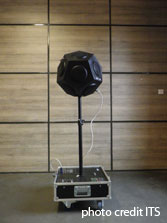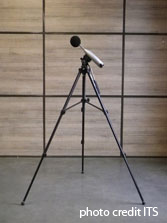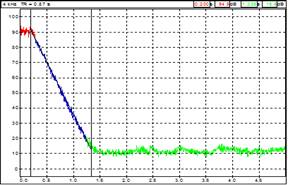General considerations relating to measurements in relation to the reverberation of a room
A value of the reverberation time too high (illustrating excessive reverberation phenomena) can impair the acoustic comfort in some spaces (given their intended purpose) and (in some cases) the conformity.
Measurements related to the reverberation of a room are therefore useful in different contexts:
- for a diagnosis, on the occasion of which the results of measurements can be compared with reference values, regulatory or normative:
- for structures hosting young children
- for educational institutions: schools, universities; both for premises dedicated to learning and training and for those intended for catering
- for healthcare facilities; both for premises accessible to the public and for those dedicated to professionals
- for work premises (including offices, e.g. when it comes to open spaces - without forgetting canteens -)
- for the verification of the effectiveness of soundproofing actions, at the end of their implementation
Practical aspects of measurements in relation to the reverberation of a room
In France, the measurement of the reverberation time is carried out in accordance with the standard NF S 31-057 - Acoustics - Verification of the acoustic quality of buildings or with the standard (which is often preferred) NF EN ISO 3382-2 - Acoustics - Measurement of acoustic parameters of rooms - Part 2: Reverberation time of ordinary rooms.
- production of the acoustic field: the acoustic field is usually produced by an omnidirectional pink noise source (interrupted noise method)
- measuring equipment: the acoustic measuring equipment generally consists of a sound level meter (with a microphone) and of a calibrator. If used, the equipment for measuring the temperature and humidity of the room is often a thermo-hygrometer.
 ITS omnidirectionnal noise source for room reverberation time measurements |
 ITS sonometer for room reverberation time measurements |
- transfer and analysis software: a transfer and analysis software is generally used, allowing a deferred exploitation of recordings carried out on site.
- reverberation time (reverberation time) evaluation: the reverberation time is the time needed for the sound pressure level to decrease by 60 dB after the noise source is turned off in a room
- example of recording of the temporal sound decay allowing the determination of the reverberation time TR for the frequency band 4 kHz (in this case: TR = 0.87 s) with an evaluation range greater than that envisaged in the standard NF EN ISO 3382-2)

(measured) reverberation time
Methods and quality of measurements in relation to the reverberation of a room
From the results of measurements in relation to the reverberation of a room depends the relevance:
- of comparisons with reference values, for the purpose of verifying the compliance of premises
- of actions that may be necessary
As far as measurement methods are concerned, standard NF EN ISO 3382-2 - Acoustics - Measurement of acoustic parameters in rooms - Part 2: Reverberation time in ordinary rooms distinguishes three of them:
- control method: the control method is suitable for evaluating the amount of absorption of the room for noise control purposes, and for control measurements of airborne sound insulation and impact sound insulation. It should be used for ISO 10052 measurements ; measurements based on control method are made in octave bands only.
- expert method: the expert method is suitable for checking the performance of buildings against the specifications of the reverberation time or the absorption of the room. It should be used for measurement in all parts of ISO 140 that mention measurements of reverberation time.
- precision method: the precision method is suitable when high measurement accuracy is required
Comparisons of the number of positions and measurements against the minimum number of positions and measurements according to standard NF EN ISO 3382-2 can be made as follows:
| Control | Expertise | Precision | |
|---|---|---|---|
| Source and microphone combinations | 2 | 6 | 12 |
| Source positions | ≥1 | ≥2 | ≥2 |
| Microphone positions | ≥2 | ≥2 | ≥3 |
| Number of decays in each position (interrupted noise method) | 1 | 2 | 3 |
It goes without saying that it is preferable that measurements related to the reverberation of a room are carried out:
- by a skilled workforce such as a physical measurement technician specializing in instrumental techniques, with years of practice
- with duly calibrated and verified sound level meters
- by a structure having:
- ISO 9001 certification for the quality management system of its services
- a human resource capable of providing a solidly founded opinion with regard to both the assessment of the conformity of the premises and the solutions for improving their quality - such as an acoustician with a diploma in building physics, with a long experience of solving problems related to the acoustic comfort of premises of all kinds -
ITS has all these assets: ITS masters all aspects of measurements related to the reverberation of a room.
Spread the word !